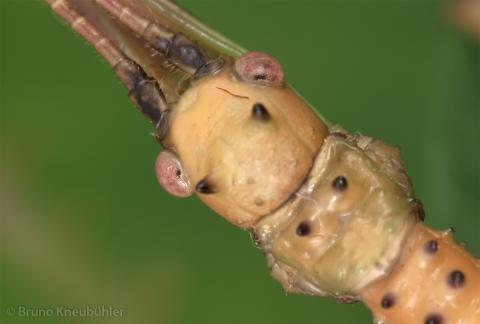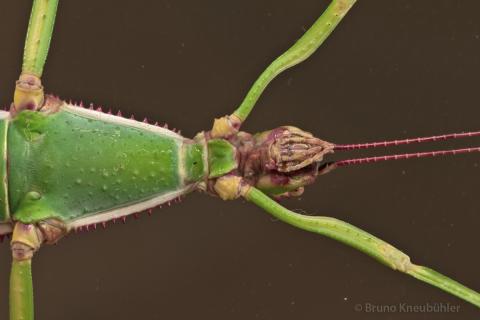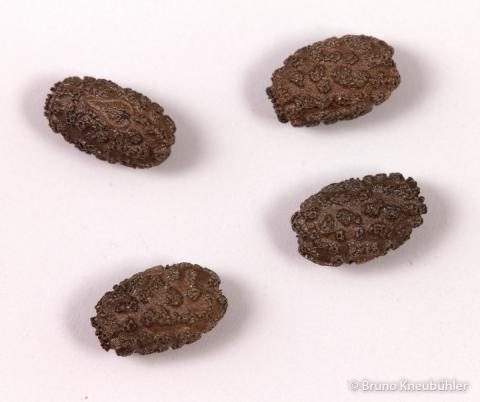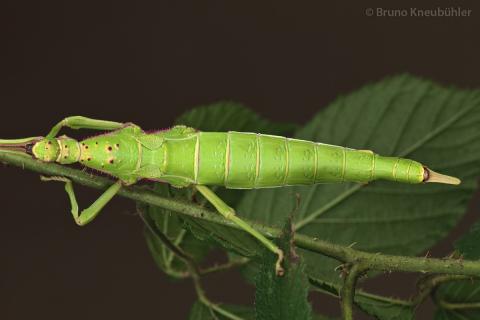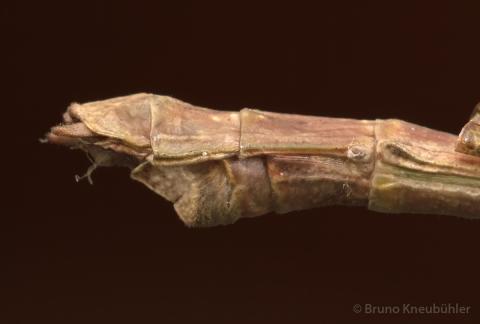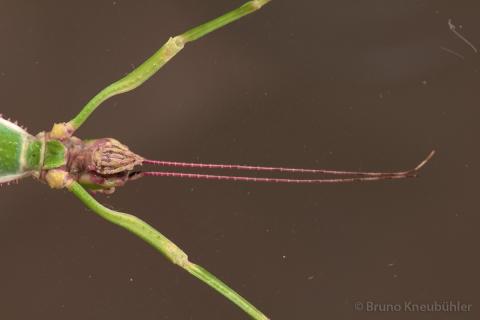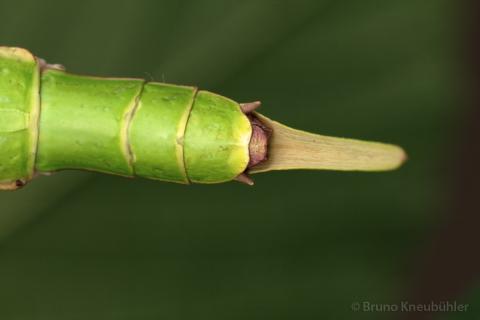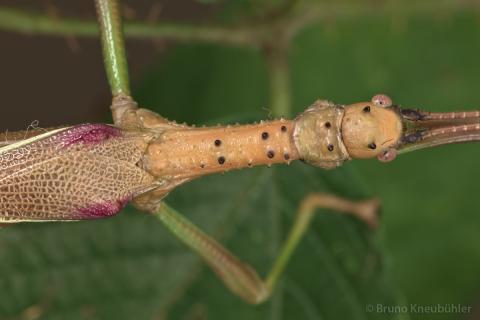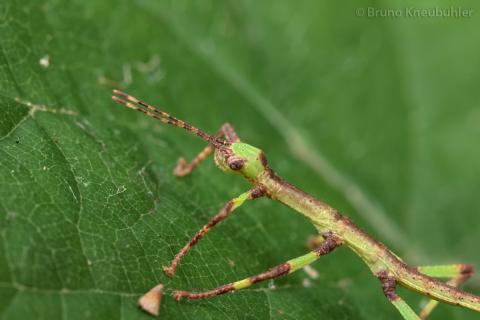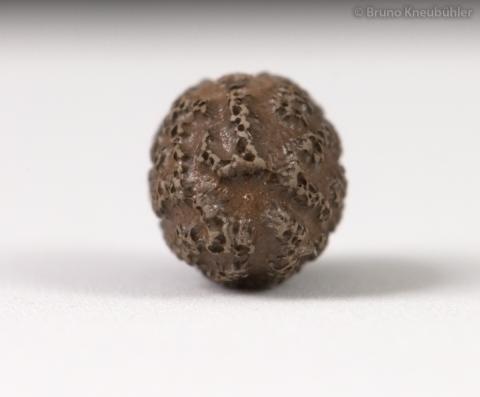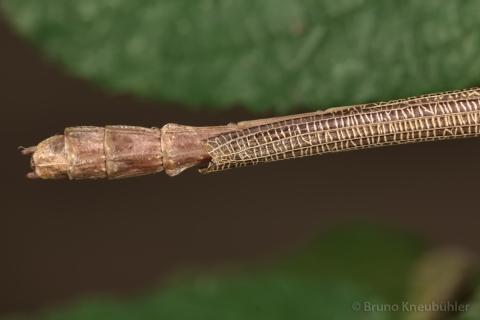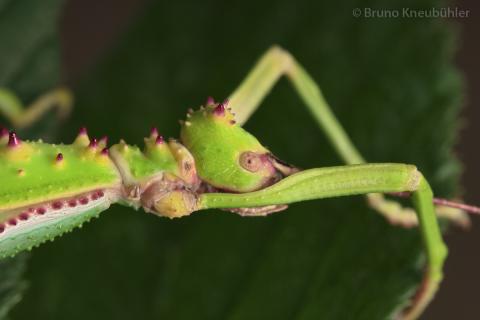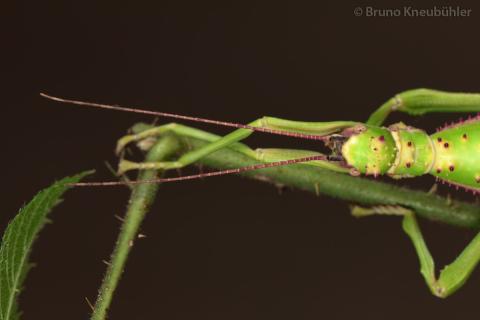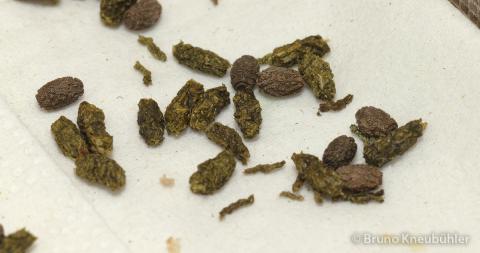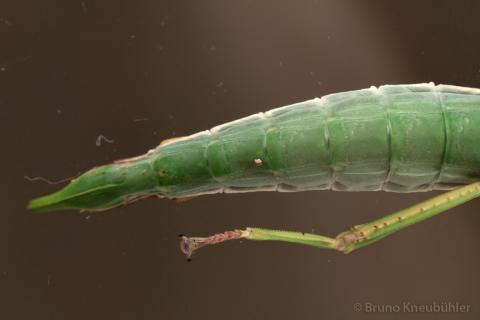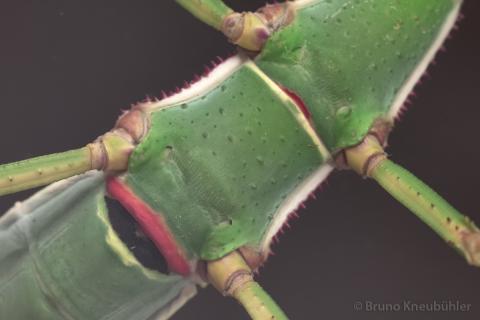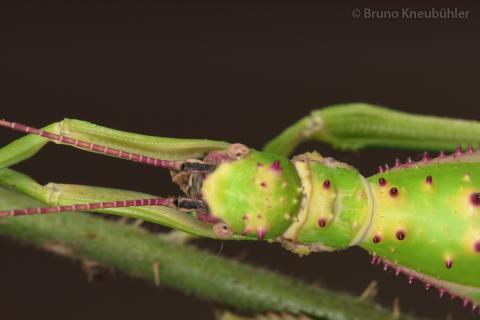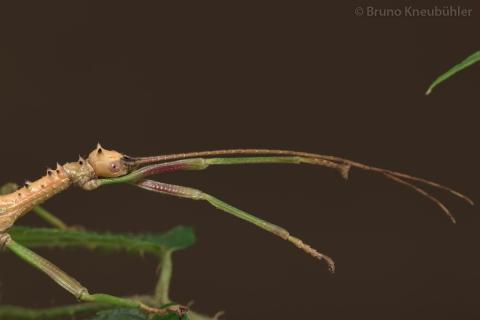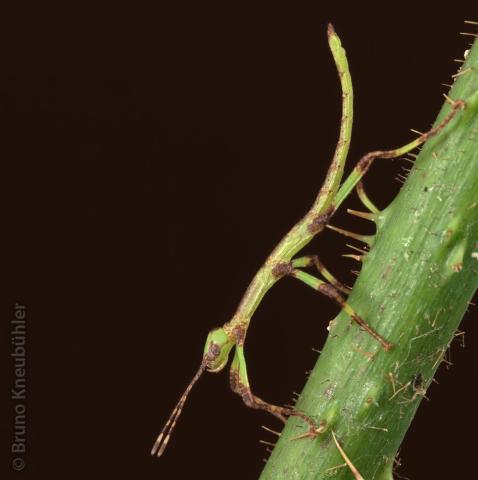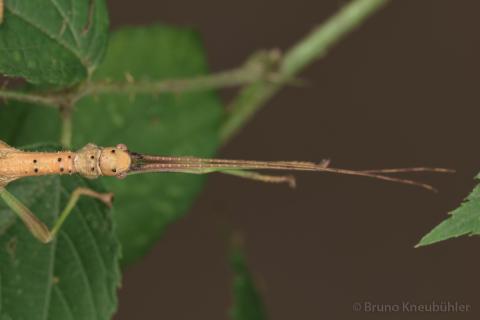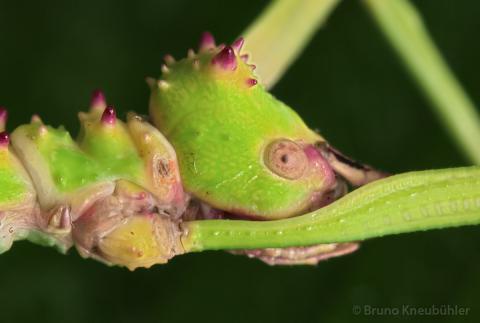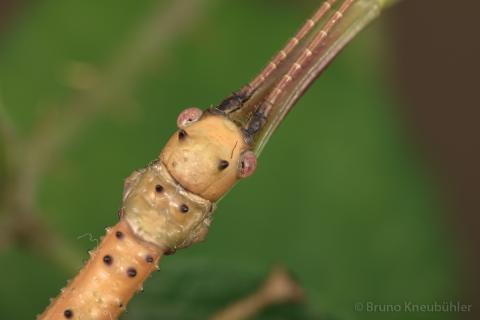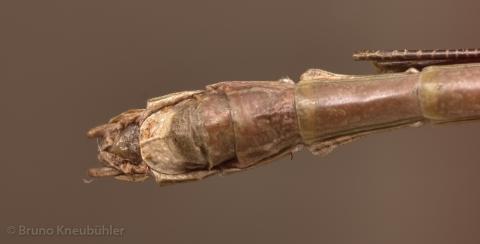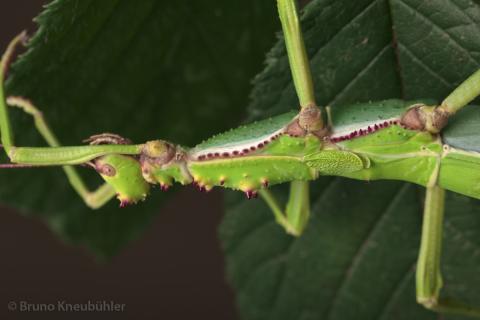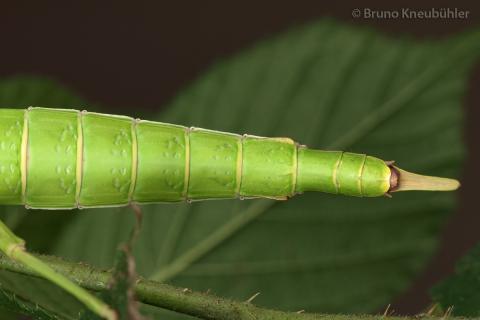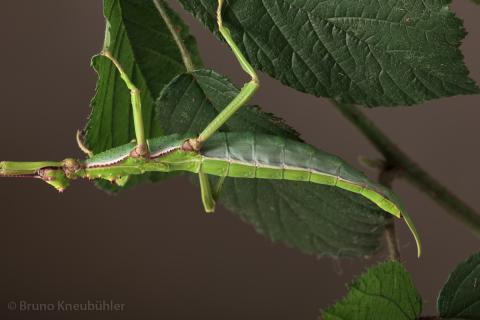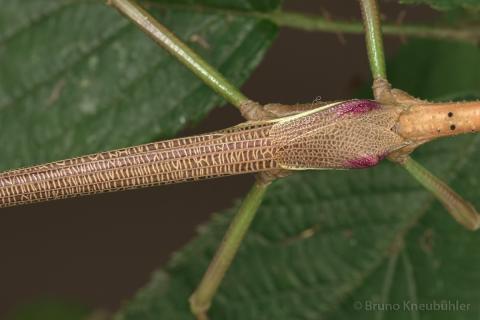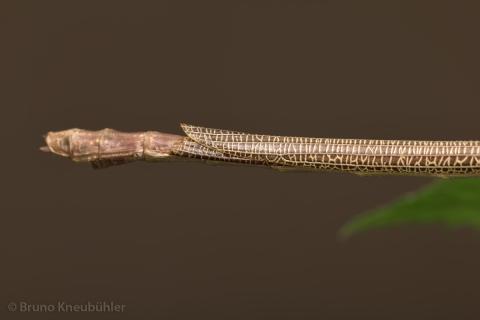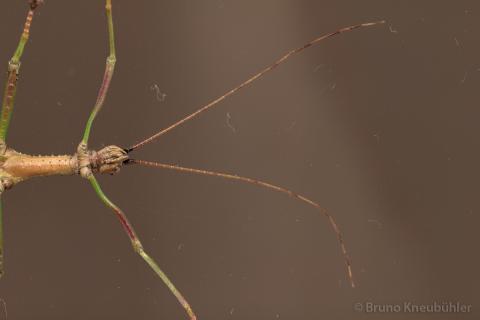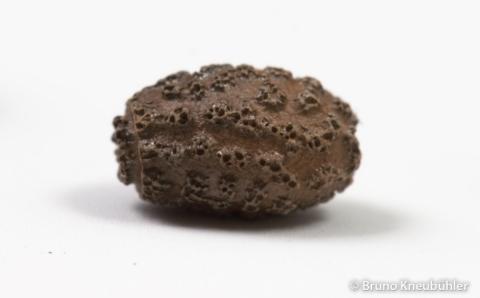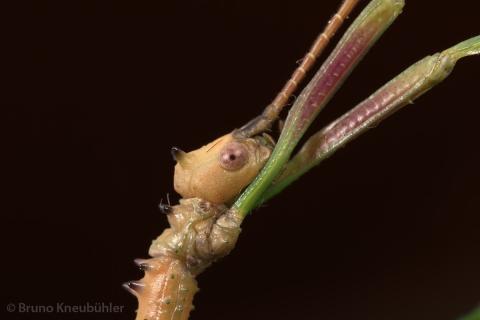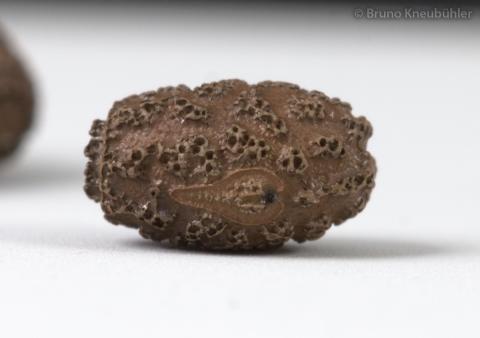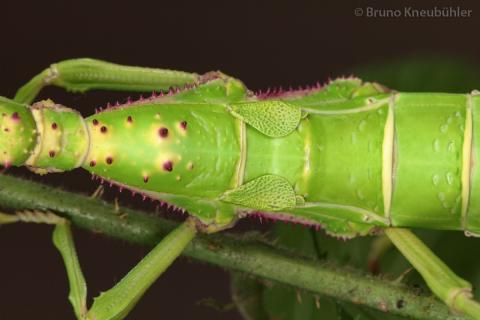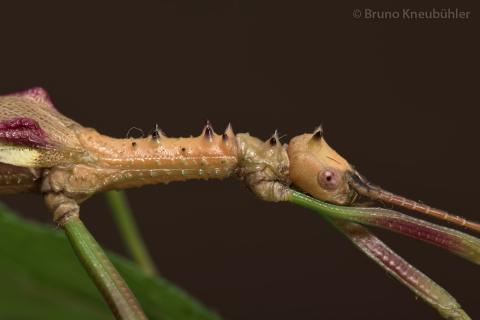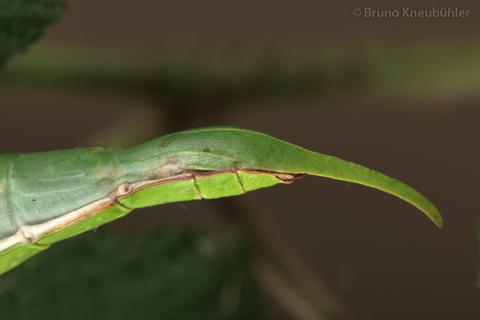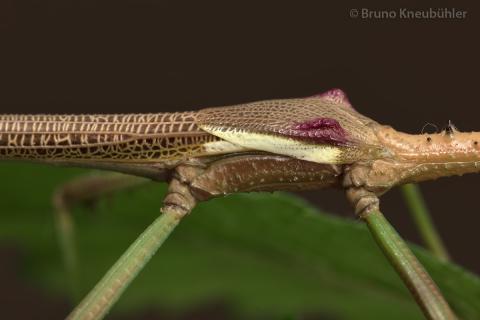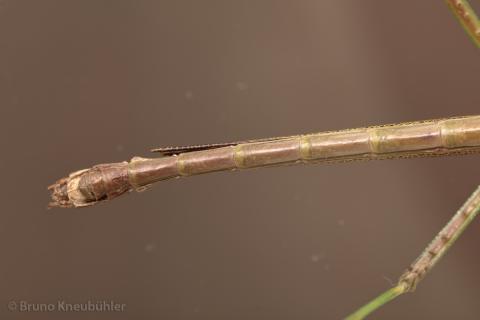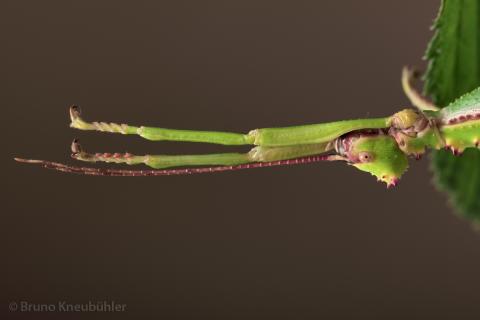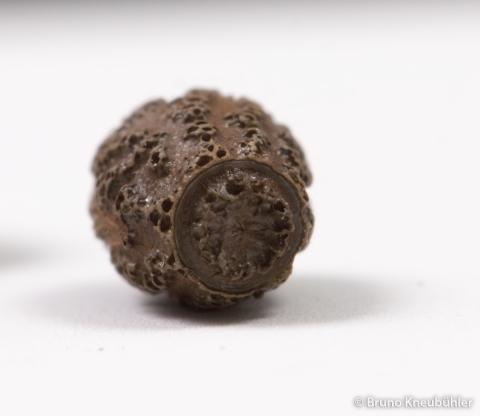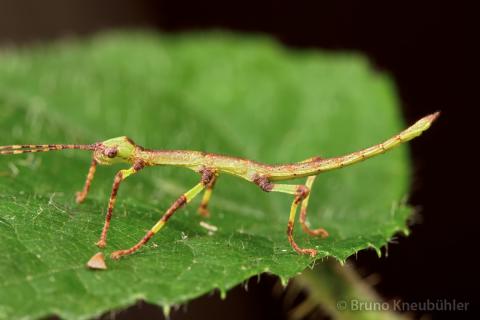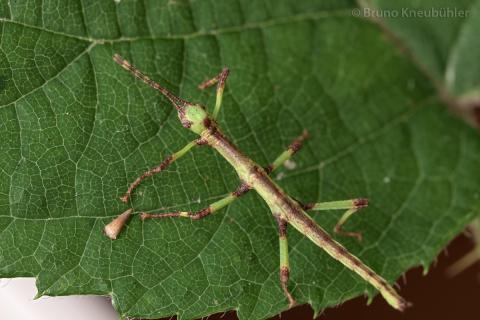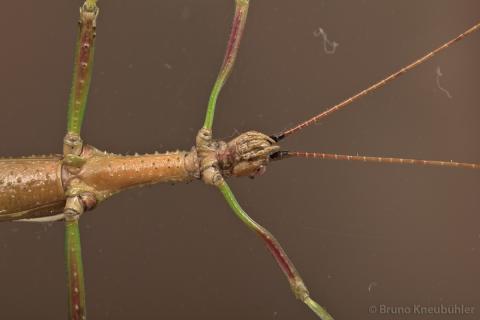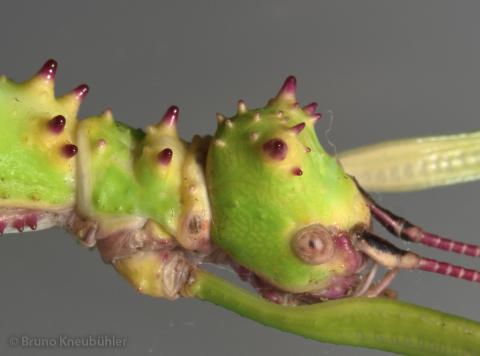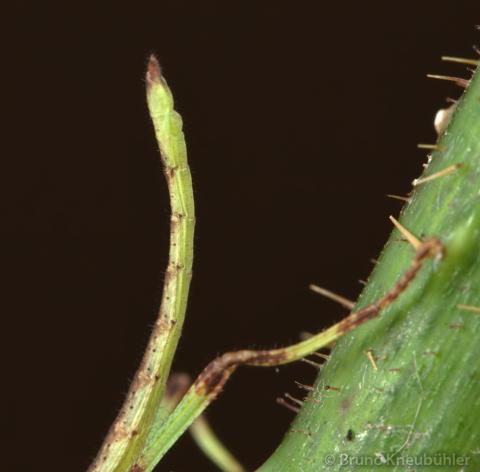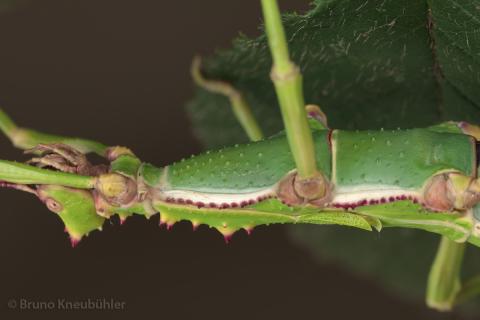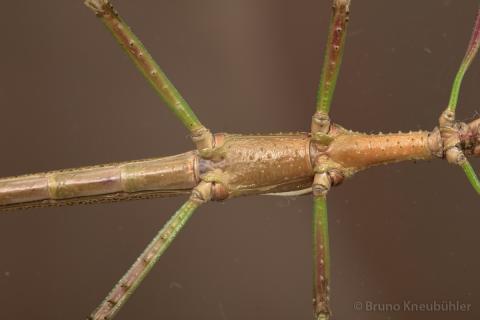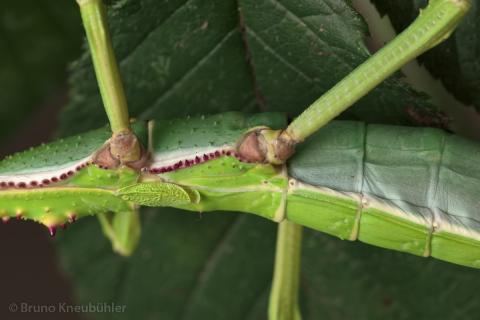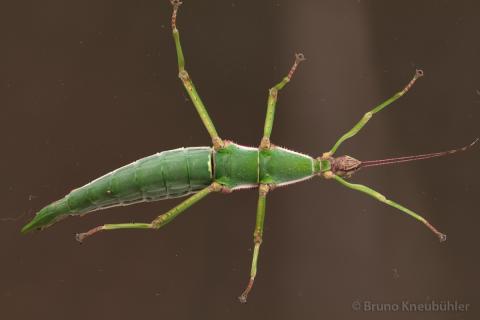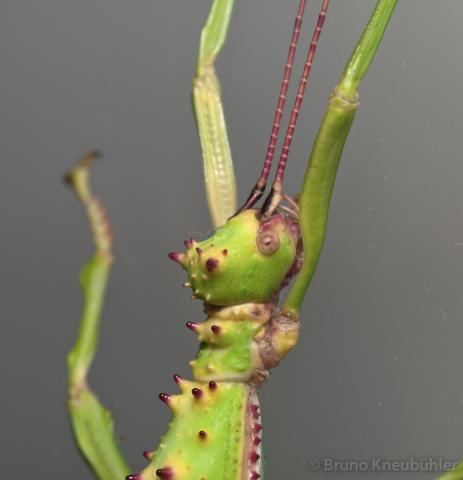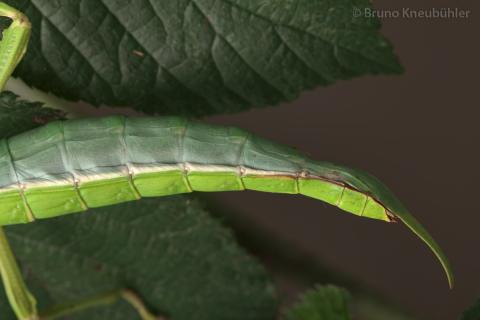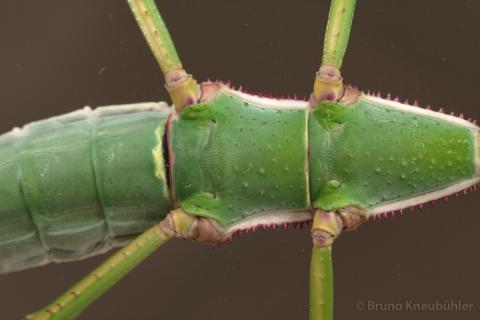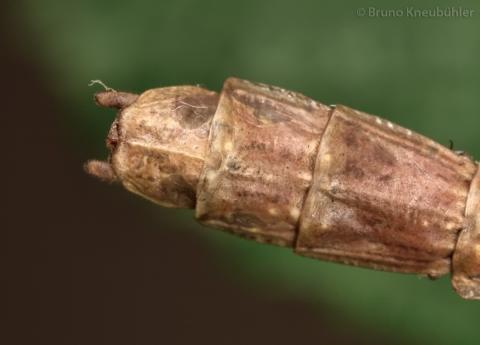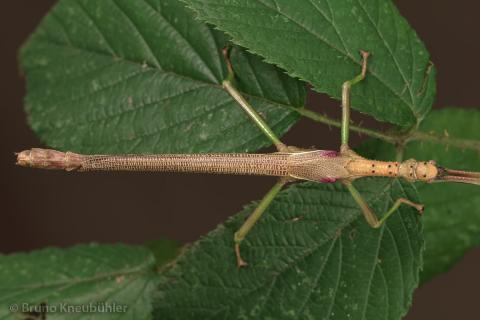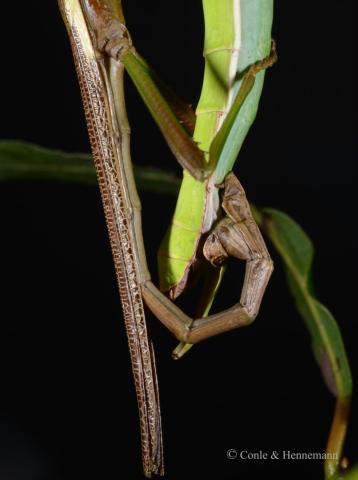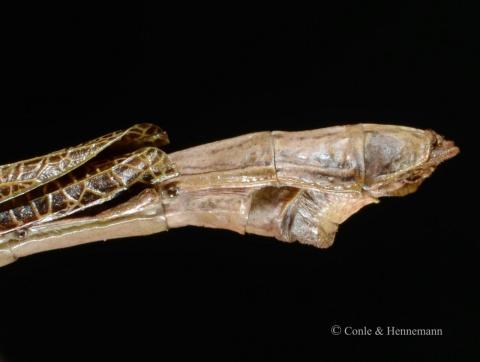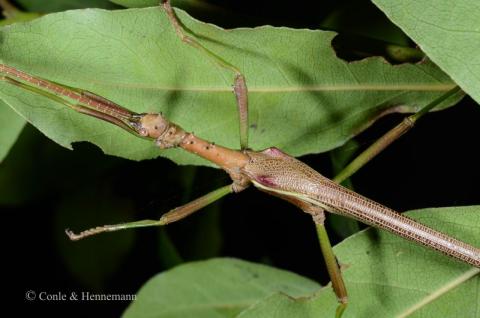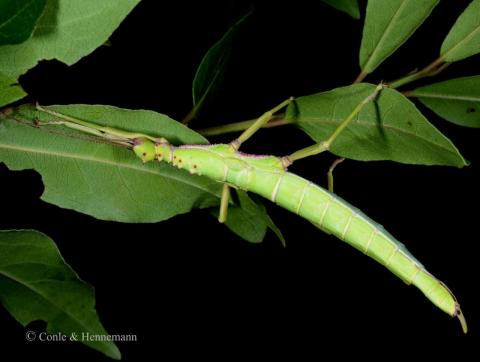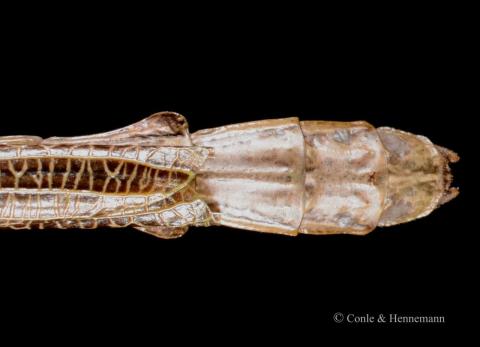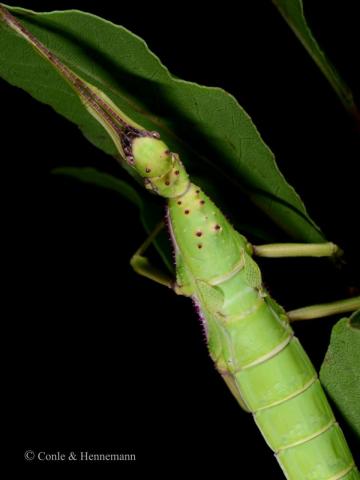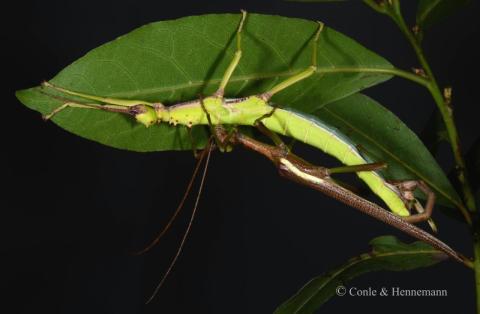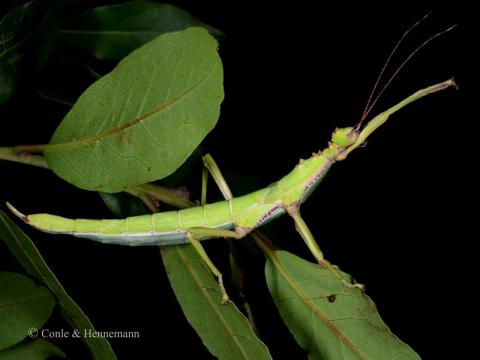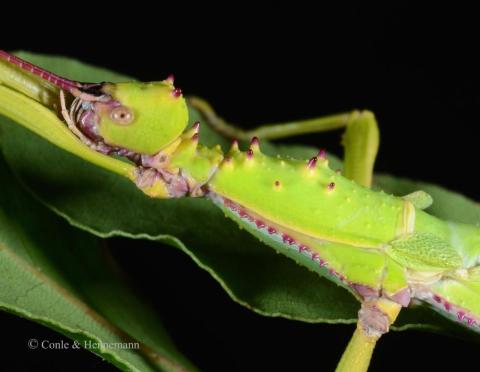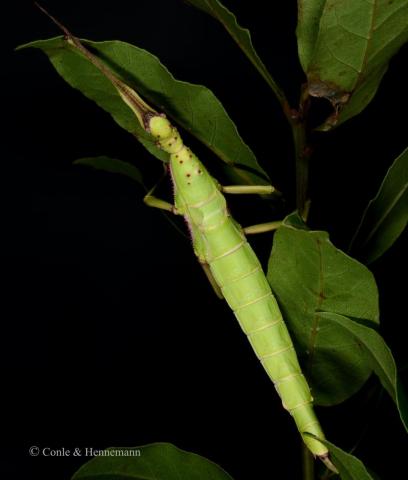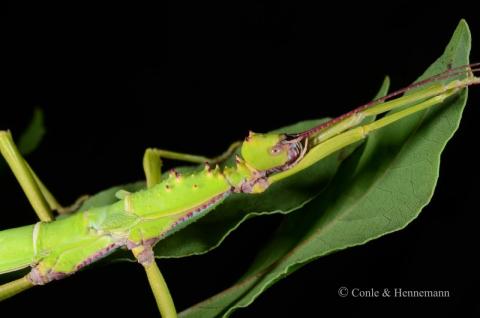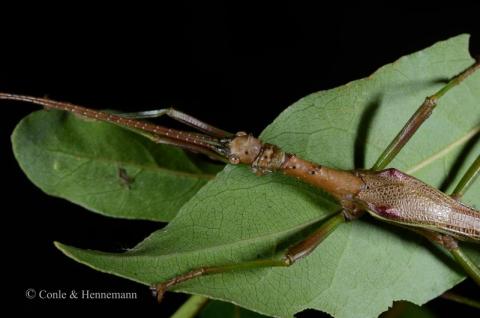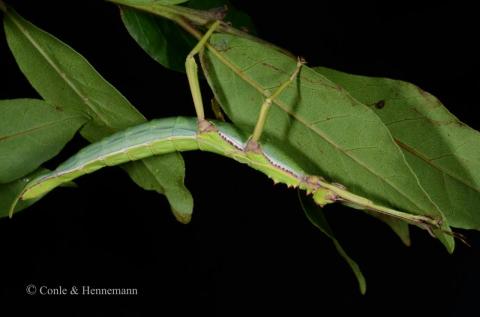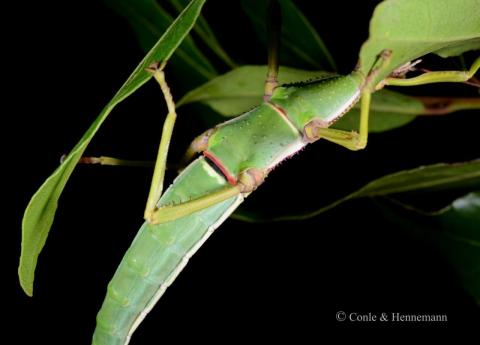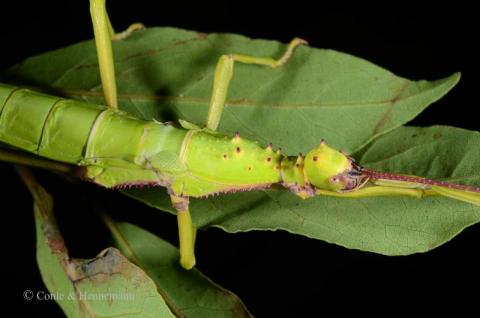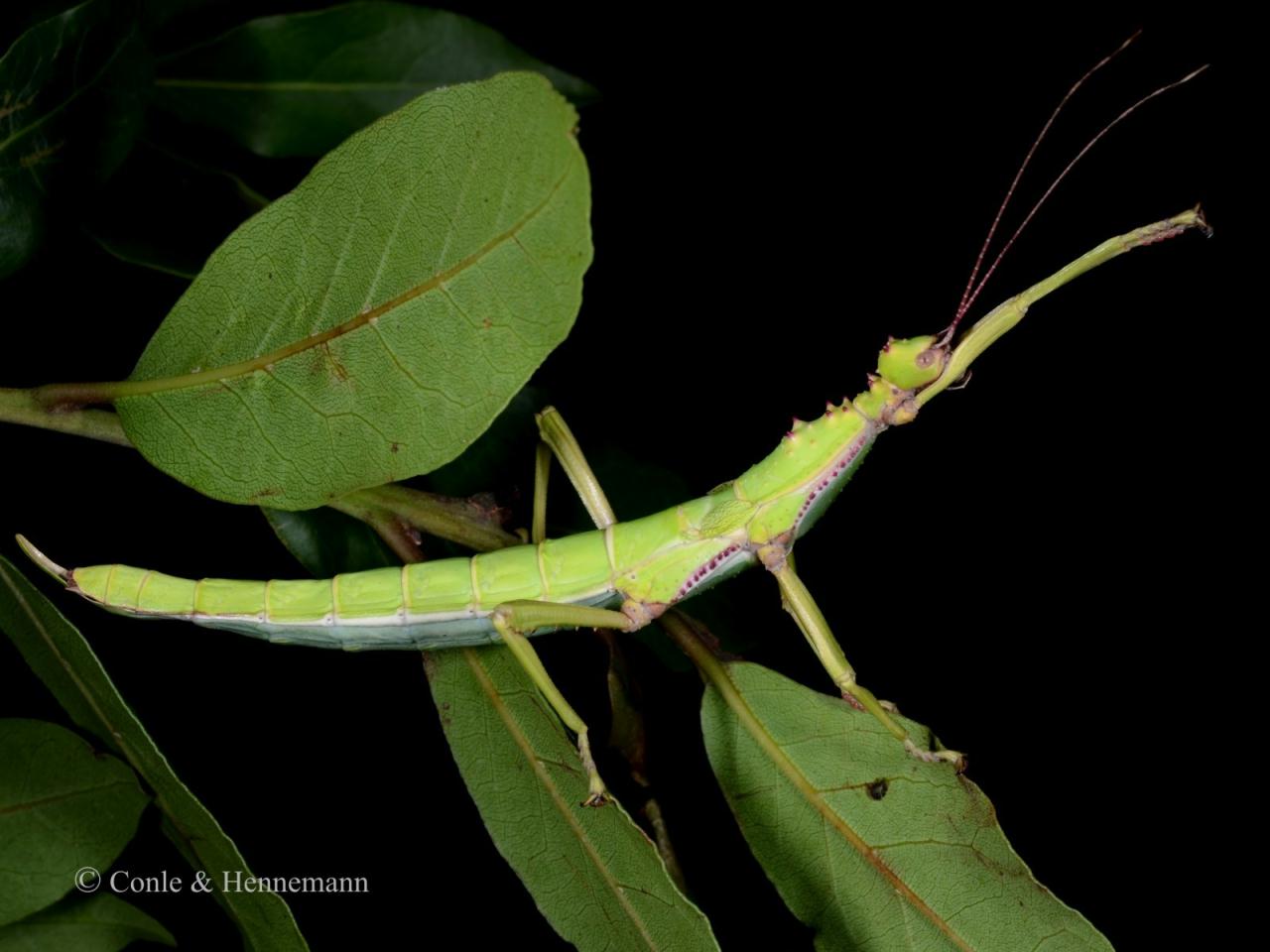
Genus
Stock
CLP
523
PSG
333
Culture status
Probably lost
Foodplants
Firethorn (Pyracantha)
Beech (Fagus sylvatica)
Salal (Gaultheria shallon)
Bramble (Rubus spp.)
Guava (Psidium guajava)
Acacia sp.
Tapura latifolia
Pimenta racemosa
Ocotea coriacea
Rose (Rosa spp.)
Breeding notes
(by Bruno Kneubuehler)
General Notes
- 2011 - first successful culture of this species by Christian Bouladou Dupré
(Martinique) - 2012 - first successful culture in Europe by Bruno Kneubuehler
_________________
Origin
- Martinique
_________________
Females
- sturdy, stout phasmids with a beautiful coloration
- rather short, compared to other species of this genus
- about 10 - 11 cm long
- coloration is not variable amongst females
- main coloration is a luminous neon-green, with yellow areas
- several pink spines and humps on the head, pro- and mesothorax (dorsally)
- mesothorax and metathorax has laterally a row of pink spines
- many small, green humps on the meso- and metathorax (ventrally)
- laterally, the body is bordered laterally by a white line (especially well visible ventrally in thorax area)
- few spines on the legs
- long subgenital plate
- fore wings (tegminae) well developed
- hind wings (alae) only rudimentarily developed
- pink antennea are about as long as fore legs
_________________
Males
- rather sturdy phasmid too
- about 8 - 8.5 cm
- coloration is rather consistent amongst males
- body and antennae mainly brown
- legs green with a pink area
- eyes slighly pink
- several big, dark spines on head and Mesothorax (dorsally)
- many small, green humps on meso- and metathorax (ventrally)
- several spines on legs
- fore wings (tegminae) as well as hind wings (alea) are well developed
- fore wings (tegminae) and the first part of the hind wings (alea) are bordered laterally with a white band
- the membranous part of the hind wings (anal region of alae) is smoke-colored and semi-transparent
- antennae distinctly longer than fore legs
_________________
Nymphs
- about 17 mm (L1)
- green body with brown areas (L1)
- antennae light-dark brown banded (L1)
- legs green-brown banded (L1)
- antennae slightly shorter than fore legs (L1)
- distinction between males and females is in L1 possible, but easier when the nymphs are older
_________________
Eggs
- about 5 x 3 mm
- dark brown
- surface strongly textured
- matt
- capitulum well developed
- micropylar-cup well visible (dark dot) at the hind end of the micropylar plate
_________________
Food Plants
- firethorn (Pyracantha coccinea)
this very common and winter green garden plant is well accepted by freshly hatched nymphs, older nymphs and adults - beech (Fagus sylvatica)
well accepted by freshly hatched nymphs. So far this plant has not yet been tested with older nymphs or adults, as it is not a winter green plant - Salal (Gaultheria shallon)
well accepted by freshly hatched nymphs, older nymphs and adults - bramble (Rubus sp.)
quite well accpeted by older nymphs. So far this plant has yet not been tested as a main diet - cherry laurel (Prunus laurocerasus)
adults feed a bit on this plant (further tests would be needed if this plant is well accepted as the sole food plant) - common guava (Psidium guajava)
well accepted (Christian Bouladou Dupré, Martinique) - Acacia muricata
well accepted, could be a natural food plant (Christian Bouladou Dupré, Martinique) - Tapura latifolia
well accepted (Christian Bouladou Dupré, Martinique) - Pimenta racemosa
well accepted (Christian Bouladou Dupré, Martinique) - Ocotea coriacea
is accepted by nymphs as well as adults (Christian Bouladou Dupré, Martinique) - Avocado (Persea americana)
is accepted by adults (Christian Bouladou Dupré, Martinique) - dog rose (Rosa canina)
is well accepted by nymphs (Yannick Bellanger, France)
_________________
Behaviour
- nymphs are calm, even when they are being touched
- adults (especially females) are often seen active during the day, mainly feeding
- adults will continue to feed, even when their cage is being moved around
- males fly very rarely
- matings occur during the night and are rather short
- males do not stay with the same female
- if they feel threatened, then they try to crawl away - but will again freeze up after just a few steps
_________________
Developement
- incubation (HH-Inkubation on slightly damp sand at 20 - 23°C) is about 3 - 5 months
- spread some moss over the eggs, this make hatching much easier for the nymphs and it reduses mould growth somewhat
- hatching ratio in F1 generation was high (> 50%)
- males will be adult (at room temperature) after about 3 months, females after about 4 months
- females start laying eggs after about 3 - 4 weeks
- eggs are being flinged away forcefully
- about 20 - 25 eggs per week and female
- adults live for several months
_________________
Breeding Notes
- an easy to keep yet very beautfiul species
- keep the nymphs in a cage with good ventilation
- a humidity level of about 60% rh seems to be good enough
- if humidity is too high (spraying water, wet paper on cage floor), this seems to cause an increase in mortality amongst nymphs
- nymphs can be kept in a Faunabox (or similar cages)
- move nymphs to a bigger cage as they grow bigger
- I have never sprayed nymphs or adults with water
- make shure that nymphs, which are about to undergo their adult moult, do not find places in the cage which would not offer them enough space beneath to moult successfully
